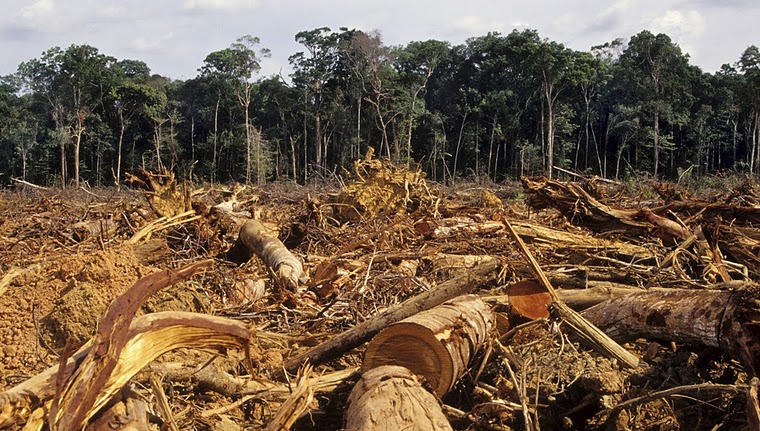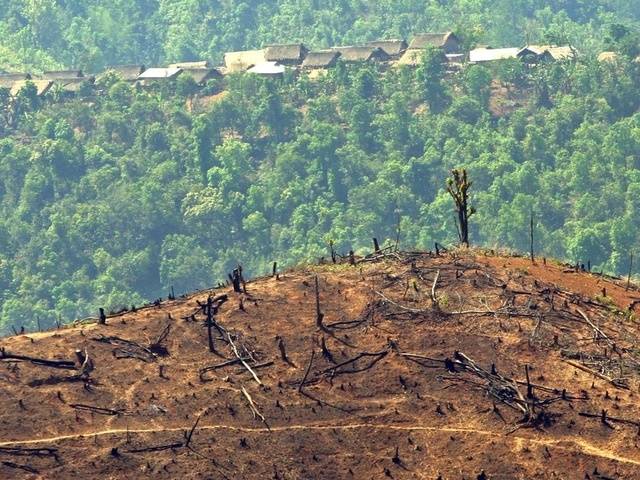
|
||||||||||||
|
|
|
Causes of Deforestation
Direct Causes
The single
biggest direct cause of tropical deforestation is conversion to cropland
and pasture, mostly for subsistence, which is growing crops or raising
livestock to meet daily needs. The conversion to agricultural land usually
results from multiple direct factors. For example, countries build roads
into remote areas to improve overland transportation of goods. The road
development itself causes a limited amount of deforestation. But roads
also provide entry to previously inaccessible—and often unclaimed—land.
Logging, both legal and illegal, often follows road expansion (and in some
cases is the reason for the road expansion). When loggers have harvested
an area’s valuable timber, they move on. The roads and the logged areas
become a magnet for settlers—farmers and ranchers who slash and burn the
remaining forest for cropland or cattle pasture, completing the
deforestation chain that began with road building. In other cases, forests
that have been degraded by logging become fire-prone and are eventually
deforested by repeated accidental fires from adjacent farms or pastures.
Although subsistence activities have dominated agriculture-driven deforestation in the tropics to date, large-scale commercial activities are playing an increasingly significant role. In the Amazon, industrial-scale cattle ranching and soybean production for world markets are increasingly important causes of deforestation, and in Indonesia, the conversion of tropical forest to commercial palm tree plantations to produce bio-fuels for export is a major cause of deforestation on Borneo and Sumatra. Underlying CausesAlthough poverty is often cited as the underlying cause of tropical deforestation, analyses of multiple scientific studies indicate that that explanation is an oversimplification. Poverty does drive people to migrate to forest frontiers, where they engage in slash and burn forest clearing for subsistence. But rarely does one factor alone bear the sole responsibility for tropical deforestation. State policies to encourage economic development, such as road and railway expansion projects, have caused significant, unintentional deforestation in the Amazon and Central America. Agricultural subsidies and tax breaks, as well as timber concessions, have encouraged forest clearing as well. Global economic factors such as a country’s foreign debt, expanding global markets for rainforest timber and pulpwood, or low domestic costs of land, labor, and fuel can encourage deforestation over more sustainable land use.
Access to technology may either enhance or diminish deforestation. The availability of technologies that allow “industrial-scale” agriculture can spur rapid forest clearing, while inefficient technology in the logging industry increases collateral damage in surrounding forests, making subsequent deforestation more likely. Underlying factors are rarely isolated; instead, multiple global and local factors exert synergistic influences on tropical deforestation in different geographic locations. Another way to look at deforestation is in terms of the percent of a country’s forest that was cleared over time. By this metric, the island nation of Comoros (north of Madagascar) fared the worst, clearing nearly 60 percent of its forests between 1990 and 2005. Landlocked Burundi in central Africa was second, clearing 47 percent of its forests. The other top five countries that cleared large percentages of their forests were Togo, in West Africa (44 percent); Honduras (37 percent); and Mauritania (36 percent). Thirteen other tropical countries or island territories cleared 20 percent or more of their forests between 1990-2005.
Credit: NASA Earth Observatory |




